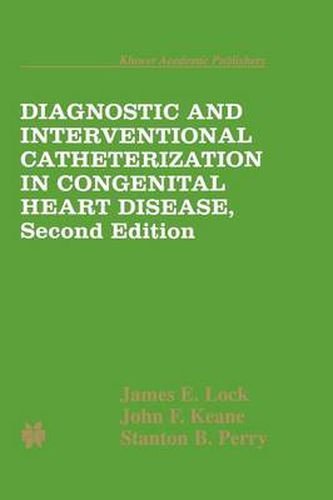Readings Newsletter
Become a Readings Member to make your shopping experience even easier.
Sign in or sign up for free!
You’re not far away from qualifying for FREE standard shipping within Australia
You’ve qualified for FREE standard shipping within Australia
The cart is loading…






This title is printed to order. This book may have been self-published. If so, we cannot guarantee the quality of the content. In the main most books will have gone through the editing process however some may not. We therefore suggest that you be aware of this before ordering this book. If in doubt check either the author or publisher’s details as we are unable to accept any returns unless they are faulty. Please contact us if you have any questions.
In the late 1990s, the field of cardiac catheterization for congenital heart disease is nearing the end of a period of rapid expansion, change, and diversification. Now is a good time to identify and assess many of these changes. This retrospective view serves more purposes than self-congratulation: it allows a clearer prediction of where the field is likely to go, and how it gets there. The first and most obvious change is the continued rapid growth of catheter-directed interventional procedures. A less dramatic but equally pervasive change has been the improvement in non-invasive diagnosis, primarily by ultrasound but increasingly via magnetic resonance imaging. A highly revolutionary change has been the consolidation and shrinkage of cardiologists who perform interventional procedures. Where will the next decade take the catheterizer and his or her colleagues? Perhaps into catheter delivery of gene therapy to treat inherited myopathies or vasculopathies. Even likelier is the use of catheters to implant pulmonary valves made from a patient’s own tissue. Likelier still will be the demise of film and the continued emergence of the multimedia laboratory. Underlying the success of any and all of these changes will be a commitment to rigorous self-criticism and self-analysis. A renewed commitment to these values is especially important at this time for the field of diagnostic and interventional catheterization in congenital heart disease.
$9.00 standard shipping within Australia
FREE standard shipping within Australia for orders over $100.00
Express & International shipping calculated at checkout
This title is printed to order. This book may have been self-published. If so, we cannot guarantee the quality of the content. In the main most books will have gone through the editing process however some may not. We therefore suggest that you be aware of this before ordering this book. If in doubt check either the author or publisher’s details as we are unable to accept any returns unless they are faulty. Please contact us if you have any questions.
In the late 1990s, the field of cardiac catheterization for congenital heart disease is nearing the end of a period of rapid expansion, change, and diversification. Now is a good time to identify and assess many of these changes. This retrospective view serves more purposes than self-congratulation: it allows a clearer prediction of where the field is likely to go, and how it gets there. The first and most obvious change is the continued rapid growth of catheter-directed interventional procedures. A less dramatic but equally pervasive change has been the improvement in non-invasive diagnosis, primarily by ultrasound but increasingly via magnetic resonance imaging. A highly revolutionary change has been the consolidation and shrinkage of cardiologists who perform interventional procedures. Where will the next decade take the catheterizer and his or her colleagues? Perhaps into catheter delivery of gene therapy to treat inherited myopathies or vasculopathies. Even likelier is the use of catheters to implant pulmonary valves made from a patient’s own tissue. Likelier still will be the demise of film and the continued emergence of the multimedia laboratory. Underlying the success of any and all of these changes will be a commitment to rigorous self-criticism and self-analysis. A renewed commitment to these values is especially important at this time for the field of diagnostic and interventional catheterization in congenital heart disease.